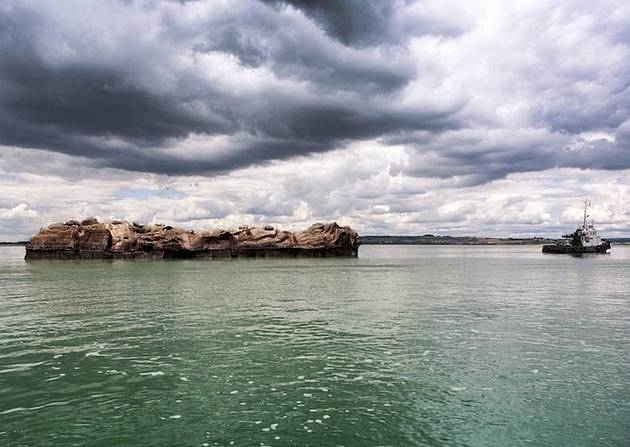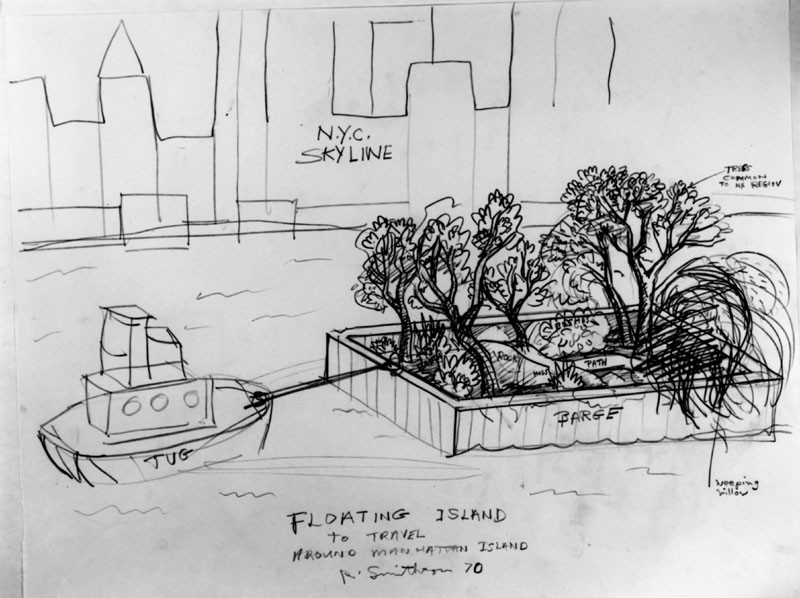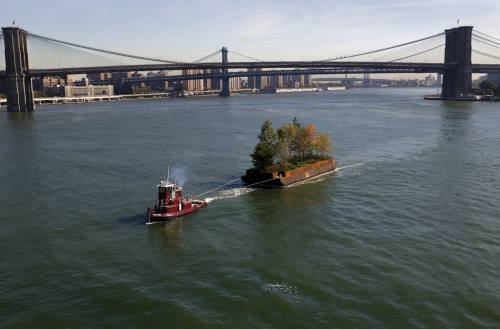
Figure. 1. Alex Hartley, Nowhereisland, 2011.
This weeks Vancouver reference readings made me curious about how contemporary artists critically discuss or portray cities, prosperity, growth, dreams, and community.
My first foray into these ideas was with artist Alex Hartley’s Nowhereisland. In Nowhereisland he discovers an island off Norway and then has it moved into international waters (see Fig. 1-2). He declares the island a new nation with its own embassy, constitution, citizens, laws etc. In an introduction to Nowhereisland the artist and his collaborators outline semi laws such as “no one can go on the island, no fireworks will be shot off it, no music gig played on it” (Nowhereisland, Website). The island (in this form) exists as a nation for one year, being transported from port to port around England. After one year the island was then dismantled and distributed to all of its citizens. Hartley’s piece brings to light questions of our role in colonization, social hierarchies and what makes a nation a community.
Figure 2. Alex Hartley, Nowhereisland, 2011. Showreel documentation.
Complimenting Hartley’s notions, Artist Robert Smithson’s Floating Island (conceived in the 1970’s) was towed on a barge around the shores of Manhattan in 2005 (see Fig. 3-4).


Figure 3-4. Robert Smithson, Floating Island, 2005.
Hartley’s Nowhereisland and Smithson’s Floating Island become radical, utopic symbols of sorts, offering imitations of better places, mobile and led by citizens and makers. These pieces create a space for dialogue and birth refugee nations.
Works Cited
Mitchell, WJ Thomas, and Mark BN Hansen, eds. Critical terms for media studies. University of Chicago Press, 2010.
Shanken, Edward A. “Art and electronic media.” (2009).
Add yours Comments – 1
I came across an interesting article about a disappearing Island, the Isle de Jean Charles, LA. The island is a tiny swath of land in the bayous of Louisiana, about 80 miles southwest of New Orleans. The island is all but vanished into the Gulf of Mexico. Many of the residents, specifically the Band of Biloxi-Chitimacha-Choctaw, have had to flee due to the rising waters that have engulfed, or rather, literally swallowed their homes and communities whole.
Further to this, “the island has fallen victim to irresponsible oil and gas extraction practices and the effects of climate change.”
https://www.popularresistance.org/louisiana-tribe-now-officially-community-of-climate-refugees/
https://vimeo.com/ondemand/cantstopthewater
https://archive.org/details/globalislandsproject